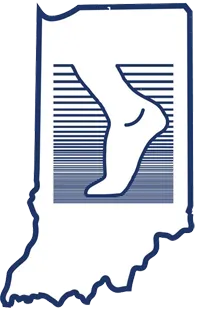Many of you may have suffered a broken ankle, ankle sprain or jammed your big toe in the past but are still suffering from constant aches and pains that often progress and worsen throughout the day. Many people seek medical attention for their post injury pain however if you are reading this you probably are postponing medical advice because “it will get better” or “I am too busy to see a doctor”. Unfortunately, the cause of the constant aches and pain may be related to the formation of post injury arthritis called post-traumatic arthritis.
Post traumatic arthritis is a condition that develops after an injury to any joint like your hip, knee and ankle. However, for a foot and ankle specialist the most commonly affected joint is the big toe joint and the ankle joint. As the severity of the arthritis progresses the integrity of the cartilage will become thin and wear away along the joint surface thus increasing the wear and tear of that joint and pain. Re- injury, mal-alignment of the joint, and increased body weight can also increase the wear and tear of the joint. The loss of cartilage within a joint will result in bone on bone contact causing symptoms of increased joint swelling, pain with activity that worsens throughout the day, and joint stiffness with reduced motion causing difficulty walking.
For an accurate diagnosis, the first step in treatment is an initial assessment by one of our foot and ankle podiatrists. A detailed lower extremity exam will determine which joints are affected, the type of motion present and the overall relationship of the foot to the ankle and leg. Standing x-rays are helpful to identify any structural changes within the joint space like joint space narrowing, formation of bone spurs and overall alignment of the entire foot. Depending on the severity of the arthritis and symptoms advanced imaging may be ordered for further evaluation.
Treatment for post- traumatic arthritis depends on the severity of the pain. Treatment options include non-surgical and advance to surgical options. Non-surgical conservative options include immobilization or support of the joints with the use of orthotics inserts or bracing, oral anti-inflammatory medications if you can take it and physical therapy to name a few. Arthritic joints can also be treated with injectable steroids in advanced cases. Conservative treatment will not cure the arthritis present however its aim is to reduce the pain and discomfort and increase the functional use of the joint. However, if you fail conservative treatment, then surgical treatment may be a viable option.
Surgical treatment is a more invasive way to remove, reshape and sometimes replace worn out joint surfaces. One example of ”cleaning out” a joint is with the use of Ankle Arthroscopy. This is a minimally invasive procedure that uses small incisions and a camera to look inside the joint. During arthroscopy inflamed tissue, loose bodies, and bone spurs can be removed. In more advance arthritic joints, the remainder of the joint surface is removed and is fused together in a more optimal position. Fusing a joint is not as scary as it sounds. The goal of a fusion is to eliminate the painful motion within a joint that no longer works correctly. Some patients may also be candidates for total ankle replacement that will maintain the motion and eliminate the pain.
The overall goal with any form of treatment is to decrease the amount of pain and discomfort present so that you can resume your normal active life with lasting relief. Unfortunately, there are no current therapies to prevent post-traumatic arthritis and it affects 5.6 million people in the United States. If you have pain or know someone who suffers with constant pain feel free to give us a call for future care and evaluation. We are only a phone call away.
